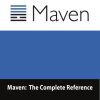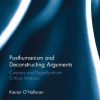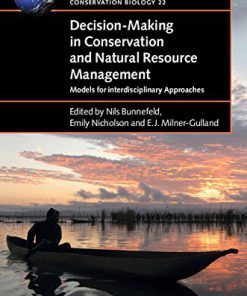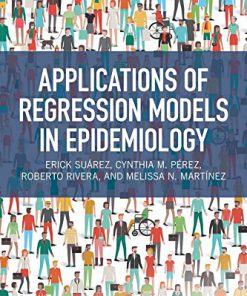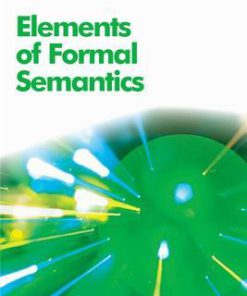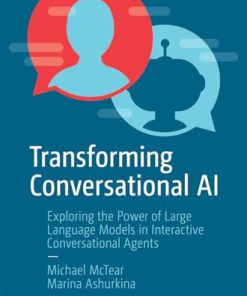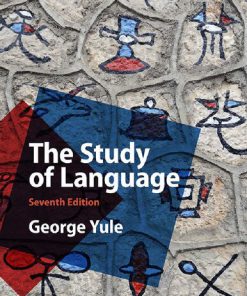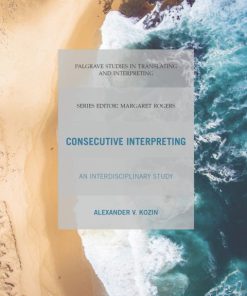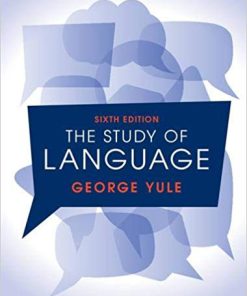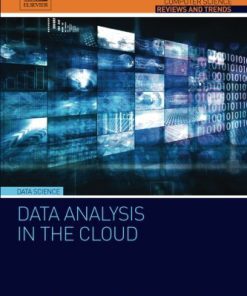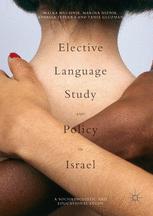Formal Models in the Study of Language Applications in Interdisciplinary Contexts 1st Edition by Joanna Blochowiak, Cristina Grisot, Stephanie Durrleman, Christopher Laenzlinger 3319488317 9783319488318
$50.00 Original price was: $50.00.$25.00Current price is: $25.00.
Formal Models in the Study of Language Applications in Interdisciplinary Contexts 1st Edition by Joanna Blochowiak, Cristina Grisot, Stephanie Durrleman, Christopher Laenzlinger – Ebook PDF Instant Download/DeliveryISBN: 3319488317, 9783319488318
Full download Formal Models in the Study of Language Applications in Interdisciplinary Contexts 1st Edition after payment.
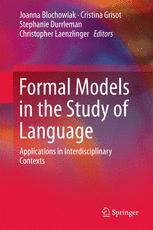
Product details:
ISBN-10 : 3319488317
ISBN-13 : 9783319488318
Author: Joanna Blochowiak, Cristina Grisot, Stephanie Durrleman, Christopher Laenzlinger
This volume presents articles that focus on the application of formal models in the study of language in a variety of innovative ways, and is dedicated to Jacques Moeschler, professor at University of Geneva, to mark the occasion of his 60th birthday. The contributions, by seasoned and budding linguists of all different linguistic backgrounds, reflect Jacques Moeschler’s diverse and visionary research over the years. The book contains three parts. The first part shows how different formal models can be applied to the analysis of such diverse problems as the syntax, semantics and pragmatics of tense, aspect and deictic expressions, syntax and pragmatics of quantifiers and semantics and pragmatics of connectives and negation. The second part presents the application of formal models to the treatment of cognitive issues related to the use of language, and in particular, demonstrating cognitive accounts of different types of human interactions, the context in utterance interpretation (salience, inferential comprehension processes), figurative uses of language (irony pretence), the role of syntax in Theory of Mind in autism and the analysis of the aesthetics of nature. Finally, the third part addresses computational and corpus-based approaches to natural language for investigating language variation, language universals and discourse related issues. This volume will be of great interest to syntacticians, pragmaticians, computer scientists, semanticians and psycholinguists.
Formal Models in the Study of Language Applications in Interdisciplinary Contexts 1st Table of contents:
1 Formal Models in the Study of Language: Introduction
1 Introduction
1.1 Background Context
1.2 Formal Models in the Study of Language
References
Linguistic Models
2 A Feature-Based Account of Weak Islands
Abstract
1 Introduction
2 Locality
2.1 Impenetrability
2.2 Intervention Locality: Relativized Minimality
3 Extractions from Weak Islands
3.1 Asymmetries with Weak Islands
3.2 The Argument-Adjunct Asymmetry Revisited
3.3 Extraction from Infinitive Weak Islands
3.4 Wh-Adjunct Extraction Across Another Wh-Adjunct
3.5 Animacy ([+Human]) in Wh-Argument Extraction
3.6 Categorial Feature, DP Versus PP
4 Weak Islands in Other Languages
4.1 Italian
4.2 Romanian
5 Feature Hierarchy for A’-Elements
6 Conclusions
References
3 On the Syntax and Pragmatics of Some Clause-Peripheral Positions
Abstract
1 Introduction
2 Some Formal and Interpretive Properties of Topic and Focus Constructions
3 Topics and Information Structure
4 Types of Foci: New Information Focus Versus Corrective Focus Versus Mirative Focus
4.1 New Information Focus
4.2 Corrective Focus
4.3 “Mirative” Focus
4.4 On Some Cross-Linguistic Differences
5 Conclusion
Acknowledgements
References
4 Two Challenges for ‘Neo-Sassurean’ Approaches to Morphosyntax
Abstract
1 Introduction: Sign-Based Theories of Language
2 Non Sign-Based Morphosyntactic Generalizations
3 Non-sign-Based External Pressures on Grammar
4 Some Concluding Remarks
References
5 Some Notes on Floating Quantifiers
Abstract
1 Introduction
2 Prosodic Cues
3 Interpretation Puzzles
4 A Little Incursion into Spanish
5 New Solutions to Old Problems
5.1 …Eppur Si Muove
5.2 Move…but Where? and Why? or the Focus Illusion
6 Conclusion
References
6 A Pragmatic and Philosophical Examination of Everett’s Claims About Pirahã
Abstract
1 Introduction
2 Everett’s Claims About Pirahã
3 Does Pirahã Really Lack a Universal Quantifier?
3.1 Everett’s Description and Arguments
3.2 An Alternative Account
3.3 Truth-Conditions and Use of All
4 The “Immediacy of Experience Principle”
4.1 Culture as a Constraint on Language
4.2 The Immediacy of Experience Principle as an Explanation of Pirahã’s Gaps
5 Conclusion
7 A Perspective-Based Account of the Imperfective Paradox
Abstract
1 Introduction
2 The Imperfective Paradox
3 A Perspective-Based Approach
4 Inadequacy of the Perspective-Based Approach
5 The Event-Based Approach
6 Experimental Evidence in Favor of the Perspective-Based Approach
6.1 Experiment 1
6.2 Experiment 3
6.3 Experiment 4
6.4 Summary
7 A Novel Perspective-Based Account of the Imperfective Paradox
7.1 Time and Events
7.2 Syntax and Semantics of Tense and Aspect
7.3 The Internal Structure of Telic Predicates
7.4 Accounting for the Imperfective Paradox
7.5 Atelic Predicates
7.6 Accounting for KP’s Findings
8 A Further Extension of the Proposal: Two Classes of Ditransitive Verbs
9 Conclusions
References
8 Spatial Deictic Expression in Serbian Ovde, Tamo, Tu; A New Approach
Abstract
1 Introduction
2 On Spatial Deictic Adverbs in Serbian Literature
3 Ovde and Tu: Same or Different?
3.1 With a Pointing Gesture
3.2 Strict Anaphoric Usages of Tu
3.2.1 3 Non-strict Anaphoric Usages of Tu
3.3 Specific (Idiomatic) Usages of Tu
3.4 The Construction with the Logical Subject in the Dative Case
3.5 Tu Followed by Final Subordinate Clauses
4 Tu and Tamo
4.1 Some Basic Observations
4.2 Tu—Proximity and Approximation
4.3 Tamo and the Memory Anaphora
5 Conclusion
References
9 The Singular Square: Contrariety and Double Negation from Aristotle to Homer
Abstract
1 Introduction: MaxContrary and the Three-Cornered Square
1.1 On the Contrariety “Operator”
1.2 The Three-Cornered Square and the Missing O
2 Excluding the Middle: The Polarizing Disjunction
2.1 Neg-Raising and MaxContrary: The Insufficiency of Pragmatic Strengthening
2.2 Beyond Bartsch: MaxContrary and Negation
3 Virtual Contrariety in the Lexicon
3.1 Coercing Contrariety: The Un-word
3.2 Coercing Contrariety: Pragmatic Strengthening of Sentential Negation
3.3 Doing Nuance: The Case of Litotes
3.4 Unexcluding the Middle: The Double not
3.4.1 Polar Asymmetry
3.4.2 Scalarity
3.4.3 Concessive Contour
3.5 Mapping Negation on the Singular Square
3.6 Strengthening to the Contrary, Blocking of the Contradictory, and Semantic Change
4 Conclusion
5 Coda: Untying the Rare Triple-Not
References
10 Connectives: Order, Causality and Beyond
Abstract
1 Introduction
2 Order in Different Approaches to Connectives
3 Causality
4 Causality and Beyond
5 Order Beyond Causality
6 Law-like Knowledge
7 What Does the Parameter Order Refer to?
8 Conclusions
References
Cognitive Models
11 Irony, Hyperbole, Jokes and Banter
Abstract
1 Introduction
2 Utterances Commonly Treated as Ironical in the Experimental Literature
3 Distinctive Features of Verbal Irony
3.1 The Ironical Attitude
3.2 The Normative Bias in Irony
3.3 The Ironical Tone of Voice
4 Are Hyperbole, Jokes and Banter Forms of Irony?
5 Concluding Remarks
References
12 Context in Relevance Theory
Abstract
1 Introduction
2 Contexts as Cognitive Constructs
3 Context Selection in RT
3.1 The Role of Relevance in Selecting Contexts for Interpretation
4 Extending the Existing Account
4.1 The Perspective of the Hearer
4.2 The Perspective of the Speaker
5 Concluding Remarks
References
13 Sequential Structure of Discourse Segments Shaped by the Interplay of Recipient Design or Salienc
Abstract
1 Introduction
2 The Socio-Cognitive Approach (SCA)
2.1 Main Tenets of SCA
2.2 Salience in SCA
3 How Is the Speaker’s Utterance Shaped?
4 Context and Speaker Meaning
5 When and How Can Speakers Manipulate Speaker Meaning?
5.1 Salience Effect
5.2 Speaker Manipulates Speaker Meaning
6 Conclusion
References
14 She Said You Said I Saw It with My Own Eyes: A Pragmatic Account of Commitment
Abstract
1 Introduction
2 Commitment: A Survey
2.1 Enunciation Theory
2.2 Linguistic Polyphony
2.3 Speech Act Theory
2.4 Dialogue and Argumentation Accounts
2.5 Modality and Evidentiality
2.6 Relevance Theory
3 Commitment Typology
4 Degrees of Commitment
5 Conclusion
References
15 Why French Modal Verbs Are not Polysemous, and Other Considerations on Conceptual and Procedural
Abstract
1 Introduction
2 Difficulties with Polysemy
3 What About Modal Verbs?
4 Underspecification of French Modal Verbs in Non-canonical Interpretations
5 Further Remarks and Conclusion
References
16 Building and Interpreting Ad Hoc Categories: A Linguistic Analysis
Abstract
1 Introduction
2 Ad Hoc Categories: Definitions and Methodology
2.1 Ad Hoc Categories and Associative Reasoning
2.2 Context Dependence and Vagueness
2.3 Methodology for Cross-Linguistic Analysis
3 The Linguistic Expression of Ad Hoc Categories
3.1 Cross-Linguistic Variation
3.1.1 Special Plurals
3.1.2 Derivational Strategies
3.1.3 Reduplication
3.1.4 Non-exhaustive Connectives
3.1.5 General Extenders
3.2 Tendencies and Correlations
4 Categorization in Discourse: From Ad Hoc Categories to Online Categorization
5 Conclusive Remarks and Prospects for Future Research
References
17 Grammar and Theory of Mind in Autism
Abstract
1 Introduction
2 The Current Contribution
3 Study 1: The Relationship Between Pronouns and ToM
3.1 Participants and Material
3.2 Results
3.3 Interim Discussion
4 Study 2: Complements-ToM Versus EF-ToM
4.1 Participants and Material
4.2 Results
4.3 Interim Discussion
5 Study 3: Complements, Verbal and Nonverbal ToM
5.1 Participants and Materials
5.2 Results
5.3 Interim Discussion
6 General Discussion
References
The Place of Human Language in the Animal World
1 Communicative Signals of Non-Human Animals
2 Structural Characteristics of Human Language
3 Are Animal Signals Like Human Words?
4 Conclusion
References
Computational Models
19 Temporal Coherence in Discourse: Theory and Application for Machine Translation
Abstract
1 Introduction
2 Temporal Coherence in Discourse: Theoretical Accounts
2.1 Discourse Relations
2.2 Pragmatic Models
3 Temporal Coherence and Verb Tense
4 Empirical Work
4.1 Corpus Work and Verb Tense Translation Divergences
4.2 Human Judgement, Application to NLP and Improving the Results of MT
5 Discussion and Conclusion
References
20 Discourse Connectives: Theoretical Models and Empirical Validations in Humans and Computers
Abstract
1 Discourse Connectives and the Geneva School of Pragmatics
2 The Processing Instructions of Causal Connectives Across Languages
3 How Do Children Acquire Causal Relations and Connectives?
4 The Automatic Disambiguation and Translation of Discourse Connectives
4.1 Empirical Cross-Linguistic Studies of Discourse Connectives
4.2 The Automatic Disambiguation of Connectives and Its Use for Machine Translation
4.3 Extensions to Other Pragmatic Phenomena
5 Conclusion
References
21 The Interface Between Semantics and Discourse Functions: Exploring the Adjective Possibile in a C
Abstract
1 Introduction
2 Modality in the Discourse of Financial News
3 Corpus and Annotation
3.1 Corpus
3.2 Results of the Syntactic Annotation
4 The Semantics and Contextual Interpretation of the Modal Adjective Possibile
4.1 The Basic Semantics of Relative Possibility
4.2 Conversational Backgrounds
4.3 Semantic Constraints of Predicative Constructions
4.4 Issues of Adjectival Semantics
4.5 Conversational Backgrounds in Attributive Constructions
5 Conclusion
References
22 What Is Pretty Cannot Be Beautiful? A Corpus-Based Analysis of the Aesthetics of Nature
Abstract
1 Introduction
2 On the Beauty of Nature and the Nature of Beauty
3 Theoretical Background: The Natural Semantic Metalanguage
4 The Representation of Beauty in CLAN: Analysis and Results
4.1 Senses of ‘Beautiful’ in CLAN
4.2 The Representation of Beauty: A Comparative Analysis in Two Corpora
5 Conclusions
References
23 When English Meets French: A Case Study in Comparative Diachronic Syntax
Abstract
1 Introduction
2 Adverbs and Finite Main Verbs in the History of English
3 SAdvV Order in the ME Brut
4 SAdvV Order in Early French
5 Conclusion
References
Some Recent Results on Cross-Linguistic, Corpus-Based Quantitative Modelling of Word Order and Aspe
1 Introduction
2 Universal 20
3 Dependency Length Minimisation
4 Learning Event Duration Using Parallel Corpora
5 Conclusions
References
Parsing Language-Specific Constructions: The Case of French Pronominal Clitics
1 Introduction
2 The Fips Parser
3 French Pronominal Clitics
3.1 Anaphoric Clitics
4 Parsing Pronominal Clitics
4.1 Clitic Attachment
4.2 Clitic Interpretation
5 Conclusion
People also search for Formal Models in the Study of Language Applications in Interdisciplinary Contexts 1st:
formal models in the study of language
formal language theory pdf
what is a formal use of language
language modeling incorporates rules of what
formal models of language
Tags: Formal Models, the Study, Language, Applications, Interdisciplinary Contexts, Joanna Blochowiak, Cristina Grisot, Stephanie Durrleman, Christopher Laenzlinger
You may also like…
Uncategorized
Linguistics - Linguistics
Computers - Artificial Intelligence (AI)
dictionaries & phrasebooks
The Study of Language 7th Edition George Yule 1108606415 9781108606417
Politics & Philosophy - Anthropology
dictionaries & phrasebooks
Computers - Networking
Data Analysis in the Cloud : Models, Techniques and Applications 1st Edition Marozzo
Education Studies & Teaching
Elective Language Study and Policy in Israel 1st Edition Malka Muchnik


